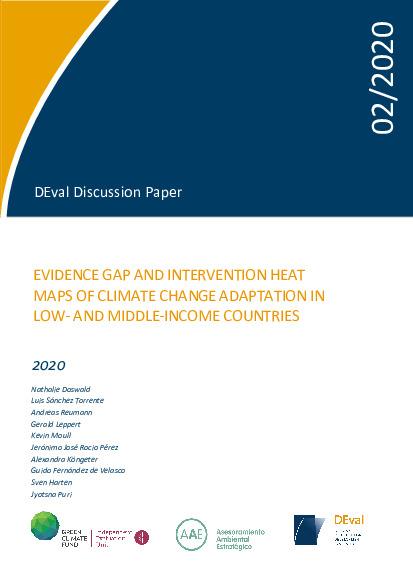Evidence gap map: Adaptation
Evidence gap map: Adaptation
This evidence review examined evidence on climate change adaptation interventions and their effectiveness between 2007 and 2018. Results from 464 studies are included in an evidence gap map, which shows large disparities in evidence by geographic region, sector, interventions, and outcomes. The evidence review also presents intervention heat maps, which illustrate where GCF resources have been allocated, and a meta-analysis which assessed the role of credit in contributing to the adoption of adaptation measures by farmers in low- and middle-income countries.
Key documents

Evidence gap map and intervention heat maps: Climate change adaptation in low- and middle-Income countries
February 2020
This evidence review examined evidence on climate change adaptation interventions and their effectiveness between 2007 and 2018. Results from 464 studies are included in an evidence gap map which shows large disparities in evidence by geographic region, sector, interventions, and outcomes.

Meta-analysis: Access to credit as a determinant of autonomous adaptation to climate change: A meta-analysis of the evidence
January 2021
This meta-analysis report builds on the evidence gap map (EGM) and intervention heat map (IHM) that examines the evidence regarding the effectiveness of climate change adaptation interventions and linked financial flows in low- and middle-income countries. This study assesses the role that access to credit plays in determining the uptake of adaptation measures in the agricultural sector.